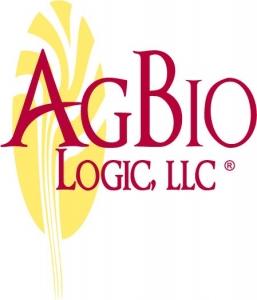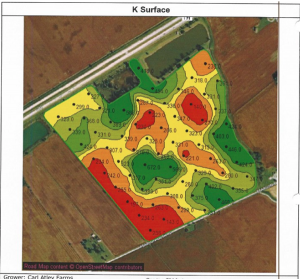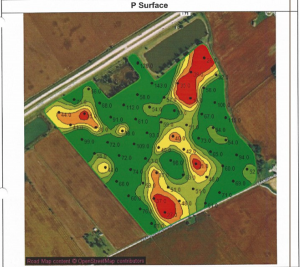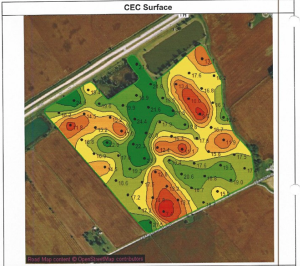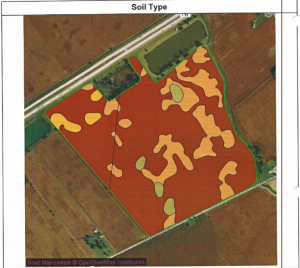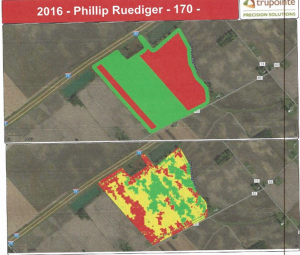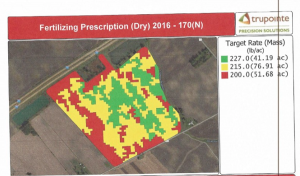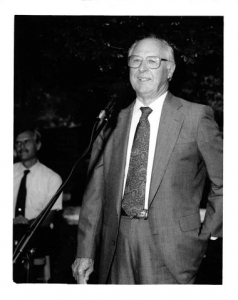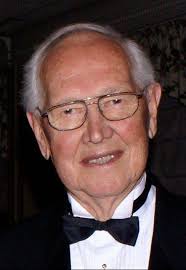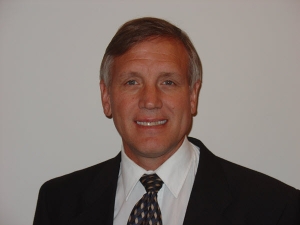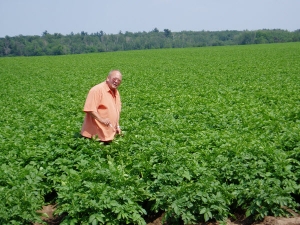Crops and Chemicals USA conference in 2017 in Raleigh, NC.
The First 25 Years Marketing a Biostimulant and A Tribute To Four Pioneers. (Scroll Down).
It would take a book to give justice to my experiences and what I have learned marketing biological-biostimulants to the agricultural sector in parts of the Southeast, South and Mid-western regions of the U.S. This is an attempt to provide an insight of that experience and of things learned from a marketing perspective that has enabled a small startup company to be able to compete in what has now become a competitive industry.
In the fall of 1991, I was introduced to biostimulants in Hopewell, Virginia with an invitation from Mr. Floyd Powers to attend a presentation sponsored by Kelpak a company based in West Africa. They were marketing a seaweed being harvested off the coast of West Africa and seeking distributors for the U.S. market. After months of a due diligence in studying the chemistry, a company now known as AgBio Logic, LLC was formed.
We did not become a distributor for Kelpak. I along with several others chose to formulate and market our own product. It did not take me long to realized that while doing a due diligence in determining that the chemistry could help with crop production, I did not study the marketability and production aspects of such chemistry. I had what I considered an adequate background to be successful having grown up on a farm, receiving a Bachelor of Science degree in Agricultural Economics from Clemson University and spending sixteen years with a branch of United States Department of Agriculture working throughout the state of SC. I had been taught that hard work and doing what was right would eventually pay off. After two years, I realized that I had a lot to learn. The company was under-capitalized, there were product production issues, little interest from farmers or farm suppliers and that research and development were going to take years. These challenges would necessitate dissolving the business. Shortly after that decision was made, I was introduced to Mr. Bob Throwbridge who had a company called Cropchem based in Decatur, IL. They were manufacturing products utilizing humic acids and seaweed extracts. I accepted a position as a product manager with responsibilities to develop the Southeastern U.S. market. My compensation would be straight commission with no expense account and no yield data in the Southeast.
I started seeking studies at land grant universities to determine which crops grown in the area provided a positive return on investment. Trials were obtained with Dr. Ken Lege in cotton, Tom Garrett in bell peppers and Dr. Bill Rhodes in watermelons all with Clemson University; Dr. John Beasley in peanuts, Dr. Craig Bednarz in cotton and Dr. George Boyhan in Vidalia onions all with the University of Georgia; Dr. Gerald Peedin in tobacco and Steven Hodges in cotton both with North Carolina State University. Also, I approached key farmers for field studies and sales.
After the third growing season with Cropchem, I turned a profit mainly from sales to the cotton, watermelon, cantaloupe, and onion farmers. The next year bad weather conditions and low commodity prices had the farm sector depressed. Sales dried up seemingly overnight. I had to find another approach, different crops or something to stay in business. Articles were being written about precision farming practices a new approach to applying inputs and involving yield monitors. The yield monitors that had the greatest acceptance with farmers were for small grains, corn and soybeans. One reason sales decreased was because farmers had a difficult time measuring the yield response the biostimulants had on their crops.
My marketing direction changed. I left the vegetable, peanut and cotton fields of South Carolina, North Carolina and Georgia to focus on wheat, soybeans and corn in North Carolina, South Carolina and Virginia. All the trial work with scientists and farmer testimonials I had generated would be of little value to my new marketing efforts.
With a determination to bring the chemistry to the farm sector and with the help of new technology, I started approaching farmers in SC, NC and Va. who were high yield award winners and who were using yield monitors. While trying to find the high yield winner in soybeans for the state of NC, I met Dr. Ronnie Heiniger with North Carolina State University in a field scouting soybeans. At that time, he had been with NC State only a few years. It would become a defining moment for my staying in the biostimulant industry. He began trial work with me in 1997 on soybeans having had no previous trial work with biostimulants. He continued trials with me for the next ten years adding wheat and corn. The results he reported reassured me that the chemistry had a place in certain crop production.
Of the three crops being studied, a product that was developed while working with Dr. Heiniger to be added to a starter fertilizer 2×2 for corn had the greatest potential. My focus became corn. I began approaching farmers who were using starter fertilizer or nitrogen at planting.
Corn at the time was $1.90 a bushel. Farmers in the Southeast were still hurting financially. It drove me to the corn belt. I thought if one was wanting to make a statement with corn it should be in the corn belt. I chose to start in Ohio because it was the closest.
I made a phone call to Ohio State University and was able to obtain a corn trial with Dr. Peter Tomison and assisted by Dr. Robert Mullin. In- furrow placement of starter fertilizer was being studied. They had to reduce the amount of starter and was wondering if a biostimulant could help. It was a timely call. That was in 2007. That summer I traveled to the Northwest Research Station near Custar, OH to observe the test plot. I was happy to discover that I could reach Cincinnati in only seven and a half hours. It took me that long to reach the Northern Neck of VA. Once I made it through Dayton on I-75 the world changed. I knew I had found the corn belt. The results from that trial were encouraging.
In 2008 I joined the Ohio Agribusiness Association and obtained their member directory. They had a large membership of farm suppliers with many farmer cooperatives. I had my work cut out. For two weeks by phone I made a market analysis of the use of biostimulant products in the state. I was happy to learn that many farm suppliers were either using a biostimulant product or considering too. With OSU’s corn trial in hand, two three ring binders of trial results from various crops, farmer testimonials from the Southeast, seventeen years of experience promoting biostimulant use and a road map of the state of Ohio, I took to the road. Of all the phone calls and visits I made, by far the best was a visit with Mr. Rod Bauer manager of Kova of Ohio in Springfield. He signed as a distributor of Cropchem products my first visit. I was now in business in the corn belt.
A challenge with a yield enhancing product like a biological is that until it becomes a proven product you have to prove the product everywhere you go. A visit I made to Mr. Thomas Norden general manager with Grelton Elevator, Inc. was another defining moment. He suggested that I contact Mr. Toby Ripberger PFR Coordinator for Central Indiana with Beck’s Hybrids to see if I could participate in their “Practical Farm Research”. I called Mr. Ripberger before I left Grelton Elevator. He did not hesitate in accepting to study it. That was in 2010. In 20I6 Beck’s Hybrids established a category called “PFR Proven Products”. My product “Start Right” made the list. It was now officially “A Proven” product. That was in 2016 twenty-five years from the time my company started marketing a biostimulant product.
What I Learned Those Twenty-Five Years
The Impact of Precision Farm Practices
Farmers were slow to adapt to precision farming practices at first. Finding farmers to work with was difficult. Making the decision to pursue farmers implementing precision farming practices was critical in surviving in business. An illustration of how it is helping sales can be seen with what took place with Carl Atley Farm in Cedarville, Ohio.
Cory Atley has the responsibility of implementing precision farm practices for their farm operation. They grid sample the soil of each field and map out the cation exchange capacity, levels of P, K and the pH. They variable rate fertilizer and seed population accordingly. They now have multiple years of yield data. They know their soils and know how they are yielding. They applied “Start Right” with their starter fertilizer in-furrow on three separate tracts covering 200 acres of their 3500 acres of corn in 2016. All three fields reflected a positive return on investment where the product was used.
They applied “Start Right” on 3420 acres of corn in 2017. (The precision maps of one of their fields that first year are attached – Scroll Down).
The utilization of precision farm practices is helping farmers realize the value biostimulants can have in crop production.
Biostimulants Needed An Industry
I remember it as if it was yesterday. I was in a Crop Production Service (CPS) location in Darlington, SC waiting for the manager to meet with me. At the time, I had two CPS locations bring in product. That would be my third. Some locations were marketing a product from Monty’s called Liquid Carbon so I knew there could be interest in what I had. While I waited, I picked up a current issue of “The Southeast Farm Press”. On its inside back cover was a whole page ad for Hydra-Hume a humic acid product from Helena. I knew then that I was going to be OK and there should be brighter days ahead. Helena with their large sales force could get the word out and, hopefully educate the farm sector to the value of Hydra-Hume. The manager informed me that CPS was buying United Agricultural Products (UAP) and that he needed to wait and see what products they were to market. UAP had recently introduced a product containing humic acid called Black Label. Once the sale of UAP took place the other two CPS locations no longer were interested in our product. I grew up hearing that competition was good. I did not really understand that until I took a course in economics at Clemson. Seeing more companies bring a biostimulant product to market was a welcomed sight.
Relationship In Sales
Relationship with your customer base plays a very big part in selling. I learned early on that one reason farm suppliers were reluctant to work with me is the fear of my product damaging their relationship with their customers. Until your product becomes a proven product, farm suppliers may be reluctant to introduce it to their customer base. They have worked hard to earn their customer trust. In the beginning, I was an unknown person with an unknown company and with an unproven product.
A Supplier’s Perspective of Biostimulants
Biostimulants are in a category by themselves but are generally placed within the specialty product division within a farm supply company. Placed into that category causes a certain mindset within the company as to how biostimulants are to be marketed. It may determine the dedication given to marketing and profit margins expected. It has always been and remains today a need for education among all segments of the farm sector as to the chemistry and the valued they can offer. A salesman is more comfortable selling something he understands and believes in.
The customer can easily observe if either of the two are missing. Understanding biostimulants and conveying their value to the farmer has been a major obstacle to some within the industry.
Faith
I do not know when I acquired the faith that I would eventually be successful in developing a market for a biostimulant product. Faith was not something that I learned but it was something that I had to acquire. I had to have it to obtain the passion in my work that was necessary to carry me through the many lows I experienced. Faith in your product is marketing 101.
In my case, the greater faith though is that I have established a relationship with that person who in Genesis 1:1 tells us in the beginning God created heaven and earth and in Psalms 46:1 God is our refuge and strength a very present help in trouble. Without having a personal relationship with him I would not have had the strength or the ability to survive in developing a market for a biostimulant product. There is no better explanation than that of my faith that has enabled me to have a twenty- five- year history in marketing biostimulants to agricultural regions in the U.S.
Conclusion
It was probably a good thing that I did not know much about marketing a speciality type product to the agricultural sector in the beginning. Knowing the challenges and the odds of failure may have kept me from getting into the fight. I do know that I am glad to have been given the opportunity to do so. I believe the future is bright and the foundation has been laid for the biostimulant industry to continue to have tremendous growth. Many farmers are seeking ways to help with the current narrow commodity profits and willing to implement biological-biostimulants in their agronomic practices as long as they show a positive return on investment.
Agricultural economists have designated the decade of 1960 to 1970 as the golden age of agriculture in the U.S. I am in my third decade marketing a biological-biostimulant product. I believe the decade of 2010 to 2020 will be considered the golden age of biostimulant use in agriculture in many parts of the world.
Maps
A Tribute To Four Pioneers Of The Biostimulant Industry
Biostimulants have been around a long time. Their use commercially in the US has not been that long. There are a number of individuals who contributed greatly in bringing some of the early awareness of the benefits they have to plants and the soil environment. I have had the good fortune to learn from some of them. If not for them, my story would be a lot different and possibly not even having one to tell.
Dr. Taze Leonard Senn
Dr. Taze Leonard Senn (Tee) 10-16-1917 – 01-12-2016
Dr. T. L. Senn became head of the Horticulture Department at Clemson Uninversity in 1960 and retired as Head Professor Emeritus in 1981.
Dr. Senn became interested in seaweed while in the Pacific in the Navy during World War II. After the war, he attended graduate school at the University of Maryland. There he was offered and accepted an opportunity to study abroad at the Norwegian Institute for Seaweed Research.
Dr. Senn has published numerous papers on his research of seweed. He has traveled to the Middle and Far East, Europe, Central and South America and many states of the U.S.A. giving lectures about seaweed and meeting with government officials. He received one grant that enabled him to collect seaweed from all over the world.
In 1987 he published the book Seaweed and Plant Growth.
Dr. Senn also acquired an interest in the study of organic material. He worked with the Chinese and Russians on weathered coal. He traveled the world looking for the best humate. His searches lead him to Iran to an area believed to have been the biblical Garden of Eden.
Dr. Senn was my second telephone call in my due diligence in determining if I should become involved with biostimulants. His home was three miles from mine. In his home during my first visit in 1991, he presented his book on seaweed. I knew then how fortunate I was.
Per Bye Ohrstrom
Per Bye Ohrstrom 1926-2012
Per Bye Ohrstrom was born in Oslo, Norway and in 1949 was a commissioned officer in the Norwegian army.
Mr. Ohrstrom came to the U.S. in 1954 and became involved in banking with The First National Bank of Chicago. In 1957 he joined the Norwegian Export-Import Company.
In 1962 he became employed with Sea-Born Mineral Division of Skod Co. Greenwich, CT and Chicago, IL. as a sales manager and later became president and general manager. He left Seaborn Corp. in 1973 and started his own importing companies, (P.B. Ohrstorm & Sons, Inc. and Maxicrop U.S.A.) marketers of Norwegian seaweed.
Mr. Ohrstrom was instrumental in my acquiring information and understanding the benefits of Ascophyllum nodosum seaweed. He provided yearly encouragement in those critical early years.
Dr. Ronnie Heiniger
Dr. Ronnie W. Heiniger
North Carolina State University
Vernon G. James Research Center
Plymouth, NC 27962
Cell Phone (252) 217 9418
Phone (252) 793-4428 ext 154
Fax (252) 793-5142
Ron_Heiniger@ncsu.edu
My work with biostimulants started not long after I accepted a job as a Cropping Systems Specialist with North Carolina State University. I felt that these materials had the potential for improving crop performance across the entire spectrum of a grower’s crop rotation. From 1997 to 1999 I worked with Crop Chem and Jerry Odell on the soyboost product on soybean in my first efforts in understanding the role of biostimulants. The initial positive results (up to a 12 bu acre-1 yield increase) spurred my interest and I expanded work over the next 10 years with similar products such as Soil Plus, Soyboost 2, P40 and PN+, and Soil Plus 40 looking at their effect on wheat and corn and how these combinations of humic acids and nutrients could be formulated for optimum response. These products were particularly suited to wheat where cool soil and air temperatures made nutrient uptake difficult and most of the early success with grower adoption was on wheat.. A 2008 report highlighted the findings that showed humic acids and nutrient combinations applied in furrow or at planting provided significant improvement in early nutrient uptake and resulted in higher yield of 12 bu acre-1 or more.
In addition to the Crop Chem products I have examined other nutrient products and humic or fulvic acid formulations for their potential to enhance early crop growth and performance. Products from Stoller International, Inc. such as Bioforge were examined along with other humic acid products from Monty’s and Loveland were tested and compared. I discovered that indeed not all humic acid products were equal with some having more activity than others. Products that combined the right types and concentrations of nutrients with humic or fulvic acids showed great promise for improving crop performance and soil function. It is gratifying to see many of these products now commonly used by top growers across the country.
Travis R. Jones
Travis R. Jones 1947 – 2017
Travis R. Jones was born in Central Mississippi and attended Mississippi College, Louisiana State University and McNeese State University with studies in chemistry, plant physiology, plant pathology and soil science.
Mr. Jones was a walking encyclopedia with his knowledge of the interaction between soils and biostimulants and how they relate to plant growth and reproduction. He discovered a certain balance between nutrients and the complex composition of humic acids, seaweed, certain plant extracts and other forms of biostimulants.. He has to his credit over 150 formulated products that worked. His approach was the development of products that were soil and plant specific.
He traveled to four continents lecturing and promoting biostimulants.
